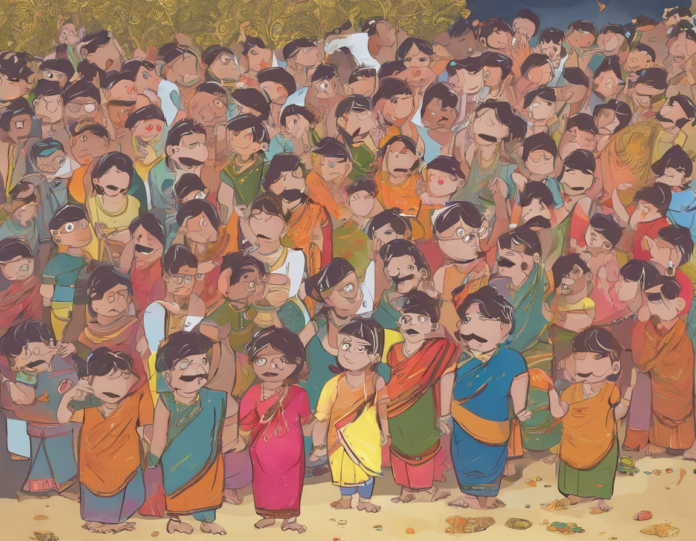With the digital world evolving at a rapid pace, businesses are constantly on the lookout for ways to enhance their brand presence through engaging design materials. Desktop publishing (DTP) has emerged as a crucial tool to create visually appealing content for both print and digital platforms. DTP software such as Adobe InDesign, QuarkXPress, and Microsoft Publisher offer a wide range of features to create professional-looking layouts for publications, marketing materials, and more. In this article, we will delve into the secrets of DTP boss and share some tips and tricks to help you master the art of desktop publishing.
The Basics of DTP Boss
Desktop publishing is the process of using computer software to design and create documents for print or digital distribution. DTP software allows users to manipulate text, images, and graphics to produce visually striking publications. Whether you are creating a brochure, magazine, flyer, or newsletter, mastering the fundamentals of DTP is essential to ensure your content stands out.
Essential Elements of DTP
-
Text: Choose fonts that are easy to read and complement your design. Utilize text formatting tools such as alignment, spacing, and styling options to enhance readability.
-
Images: Incorporate high-quality images that are relevant to your content. Resize images proportionally to avoid distortion and maintain visual appeal.
-
Layout: Create a balanced layout by organizing content in a visually appealing manner. Utilize grids and guides to maintain consistency and alignment throughout the document.
-
Color: Use color strategically to evoke emotions and create a cohesive visual identity. Pay attention to color theory and ensure consistency in your color palette.
Tips to Enhance Your DTP Skills
Mastering the art of desktop publishing requires a combination of creativity, technical skills, and attention to detail. Here are some tips and tricks to help you elevate your DTP game and become a DTP boss.
1. Utilize Master Pages
Master pages allow you to create consistent layouts across multiple pages in your document. Use master pages for elements that appear on every page, such as headers, footers, and page numbers. This saves time and ensures uniformity throughout your publication.
2. Explore Typography
Typography plays a vital role in DTP, as it directly impacts the readability and visual appeal of your content. Experiment with different font combinations, sizes, and styles to create dynamic text layouts. Remember to maintain hierarchy by using different font weights and styles for headings, subheadings, and body text.
3. Embrace White Space
White space, or negative space, is the empty space around design elements in your layout. Embracing white space can improve readability, highlight key elements, and create a sense of elegance in your design. Avoid cluttered layouts and allow elements to breathe for a clean and sophisticated look.
4. Work with Grid Systems
Grid systems provide a framework for organizing content within your layout. By dividing your design into columns and rows, you can achieve alignment, consistency, and visual harmony. Grid systems help maintain structure and make it easier to create balanced compositions.
5. Harness the Power of Styles
Stylesheets allow you to create consistent formatting across your document with just a few clicks. Define styles for headings, paragraphs, lists, and other elements to maintain uniformity and streamline your workflow. Update styles globally to ensure a cohesive look and feel throughout your publication.
6. Optimize Images for Print and Web
When using images in your DTP projects, ensure they are high resolution for print materials and appropriately optimized for web content. Resize images based on their intended output to maintain clarity and sharpness. Compress images for web to reduce file size and improve loading times.
Frequently Asked Questions (FAQs)
1. What is the difference between DTP and graphic design?
Answer: Desktop publishing focuses on the layout and design of documents for print or digital distribution, while graphic design encompasses a broader range of visual communication, including branding, logos, and multimedia design.
2. Which DTP software is best for beginners?
Answer: Adobe InDesign is widely regarded as one of the best DTP software for beginners due to its user-friendly interface, robust features, and extensive online resources for learning.
3. How can I improve my DTP skills?
Answer: Practice regularly, experiment with different design elements, stay updated on design trends, and seek feedback from peers or mentors to improve your DTP skills over time.
4. What are common mistakes to avoid in DTP?
Answer: Common mistakes in DTP include overcrowded layouts, inconsistent formatting, poor image resolution, excessive use of decorative elements, and neglecting to proofread for errors.
5. How important is color theory in DTP?
Answer: Color theory is essential in DTP as it influences the mood, readability, and visual impact of your design. Understanding color harmonies, contrasts, and psychology can help create more effective and engaging layouts.
In conclusion, mastering the art of desktop publishing requires a blend of technical skills, creativity, and attention to detail. By implementing the tips and tricks highlighted in this article and familiarizing yourself with the secrets of DTP boss, you can elevate your design projects and create visually stunning publications that captivate your audience. Experiment with different techniques, stay curious, and continuously seek to improve your DTP skills to stay ahead in the ever-evolving world of design.


